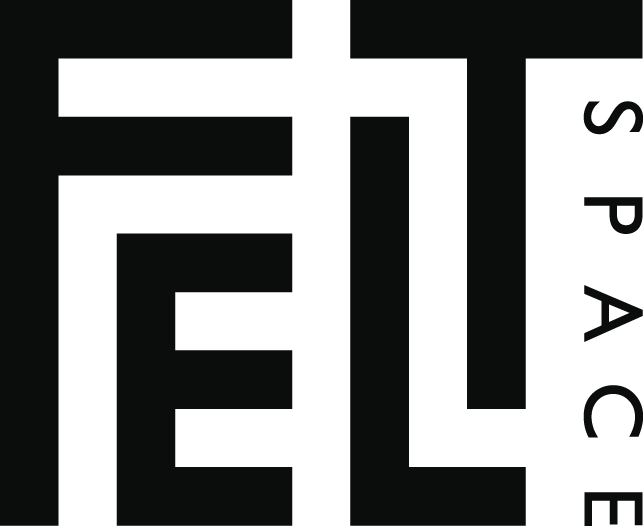A walk through the three new exhibitions at FELTspace this month, makes the viewer wonder if they just imagined it all.
A stillness permeates the one-way street, the only audible presence a low roar of tuneless city noise. Streetlights dimly carve out the shadowed edges of cars and buildings while human silhouettes pass through the glow of a well-lit thoroughfare in the distance. A bespectacled figure breaks away from the other silhouettes, disturbing the stillness and stops on the pavement beside a leafless tree. Turning to look at the building in front of them, they contemplate its façade dominated by a large window, their glasses reflecting images of a world outside their reality, a world of storytellers like those who existed before we learned how to record them with text and film.
Is this a scene from a movie, my imagination or a memory from the new FELTspace exhibition? Looped Narrative, Isabelle Rudolph’s video work showing as part of FELTdark, poses such questions.
Featuring people from Cuba, Mexico and Australia, they each recall a scene from a film that is memorable to them and a scene from their imagination or memory with no indication of which is which.
I listen to the narrative or read the translation, the words creating vivid images in my head, thinking about how films begin as stories without visuals, of how language has the power to evoke mental images based on personal experiences and memories.
At the same time, I think about our ability to translate and share the memories of visual experience through a narrative of our own creation.
Cinema, as Rudolph’s work suggests, ‘serves as a platform for making and sharing worlds,’ a medium that can transcend cultural and geographical differences.
It asks us to consider memory as part of identity, the experience of an event remembered differently depending on the individual, and our capacity to connect with one another through the sharing of these experiences.
Entering the FELTspace gallery, I encounter the first of Tara Denney’s work, a mass of what looks to be feathers shaped into a rectangle.
My tactile memory initiates the sensory association of softness only to be diverted when I notice four cast silver swans that occupy the corners.
The second piece catches me off guard in a similar fashion.
At first, it appears to be grey cardboard packaging, until I see the glint from a small hole and look closer to find it reveals another shiny texture beneath the grey surface.
Aluminium, Denney indicates as the material used, not pliable but rigid. There is a contrast here found in all their work which asks me to look closer, disregard what I initially see and ask what else it is saying.
A narrative begins to form the longer I look at the work ‘Only You’, the remnants of Glomesh bags sitting flat beneath the shell of an oyster long since shucked of its soft interior and replaced with a spherical brooch over a coiled silver necklace. Symbols of femininity asking to be reimagined.
Through Denney’s practice of ‘feminist methodologies’, they create a lens with which to see their work through the placement and contrast of the materials, generating questions of how we should view old associations, gendered or otherwise, in the present.
I leave Denney’s work and the bright lights of the exhibition to enter the back gallery, a contrastingly dark room with Ming Liew’s film essay, ‘How Will I Remember’ projected onto the wall.
In the few chairs at the back, I sit with another person in silence, both of us watching and listening.
Through associations with memory and image-making, the film presents us with Liew’s bilingual narration about grief, loss and their experience as a first-generation Chinese immigrant in Australia.
Accompanied by a duality of images, both static and moving, the work is structured in fragments, just like memory.
John Berger writes, ‘unlike memory, photographs do not in themselves preserve meaning’.
A photograph shows us a moment captured in time but, without context, the meaning remains elusive. Liew exposes us to this connection, creating meaning for the chosen images through a narrative.
The work also asks us to consider our own identity by examining what memories we share with others like photographs, and perhaps how to show our true selves by ‘revealing the negatives that didn’t make the cut.’
Leaving the exhibition, I wonder about the person who I sat next to, and what memories they hold that have shaped their identity in the present.
How will we both remember the exhibition?
Perhaps we will try to narrate this shared experience to others and they will form mental images in their heads of the scenes we describe through language.
Maybe they will even take something from our story, whether they believe it to be truth or fiction, something that will allow them to see their own memories and associations from a new perspective.
